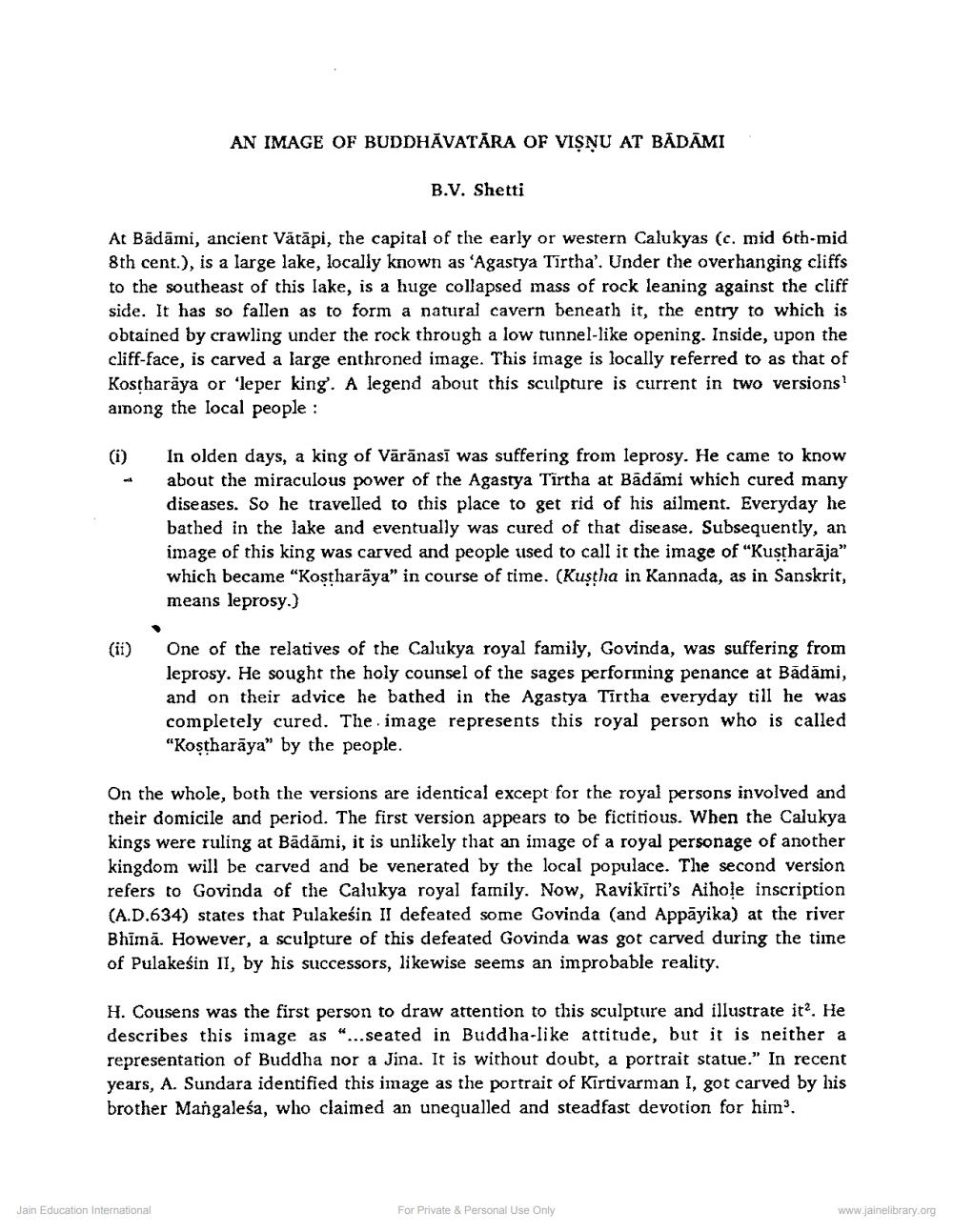Book Title: Image of Buddhavatara of Visnu at Badami Author(s): B V Shetti Publisher: Z_Nirgrantha_1_022701.pdf and Nirgrantha_2_022702.pdf and Nirgrantha_3_022703.pdf View full book textPage 1
________________ AN IMAGE OF BUDDHĂVATĀRA OF VISNU AT BĀDĀMI B.V. Shetti At Bādāmi, ancient Vätāpi, the capital of the early or western Calukyas (c. mid 6th-mid 8th cent.), is a large lake, locally known as 'Agastya Tirtha'. Under the overhanging cliffs to the southeast of this lake, is a huge collapsed mass of rock leaning against the cliff side. It has so fallen as to form a natural cavern beneath it, the entry to which is obtained by crawling under the rock through a low tunnel-like opening. Inside, upon the cliff-face, is carved a large enthroned image. This image is locally referred to as that of Kostharāya or "leper king'. A legend about this sculpture is current in two versions? among the local people : In olden days, a king of Vārānasi was suffering from leprosy. He came to know about the miraculous power of the Agastya Tirtha at Bādāmi which cured many diseases. So he travelled to this place to get rid of his ailment. Everyday he bathed in the lake and eventually was cured of that disease. Subsequently, an image of this king was carved and people used to call it the image of "Kustharāja" which became "Kostharāya" in course of time. (Kuştha in Kannada, as in Sanskrit, means leprosy.) (ii) One of the relatives of the Calukya royal family, Govinda, was suffering from leprosy. He sought the holy counsel of the sages performing penance at Badāmi, and on their advice he bathed in the Agastya Tirtha everyday till he was completely cured. The image represents this royal person who is called "Kostharāya" by the people. On the whole, both the versions are identical except for the royal persons involved and their domicile and period. The first version appears to be fictitious. When the Calukya kings were ruling at Bādāmi, it is unlikely that an image of a royal personage of another kingdom will be carved and be venerated by the local populace. The second version refers to Govinda of the Calukya royal family. Now, Ravikirti's Aihole inscription (A.D.634) states that Pulakesin II defeated some Govinda (and Appāyika) at the river Bhīmā. However, a sculpture of this defeated Govinda was got carved during the time of Pulakesin II, by his successors, likewise seems an improbable reality. H. Cousens was the first person to draw attention to this sculpture and illustrate it. He describes this image as "...seated in Buddha-like attitude, but it is neither a representation of Buddha nor a Jina. It is without doubt, a portrait statue." In recent years, A. Sundara identified this image as the portrait of Kirtivarman I, got carved by his brother Mangaleśa, who claimed an unequalled and steadfast devotion for him? Jain Education International For Private & Personal Use Only www.jainelibrary.orgPage Navigation
1 2 3 4 5
